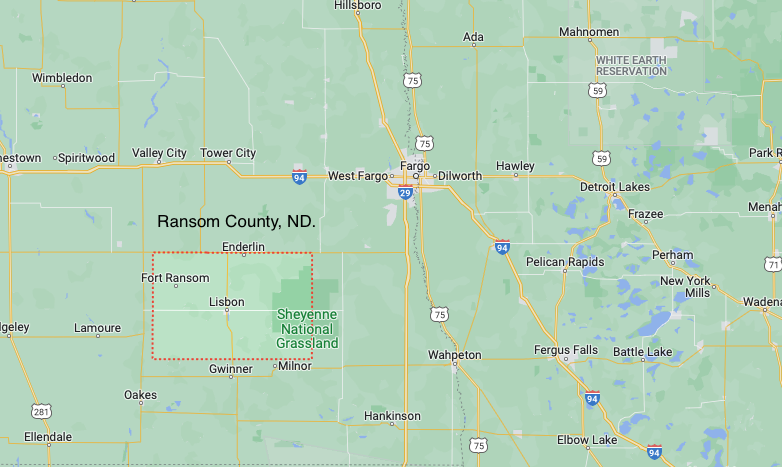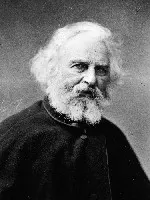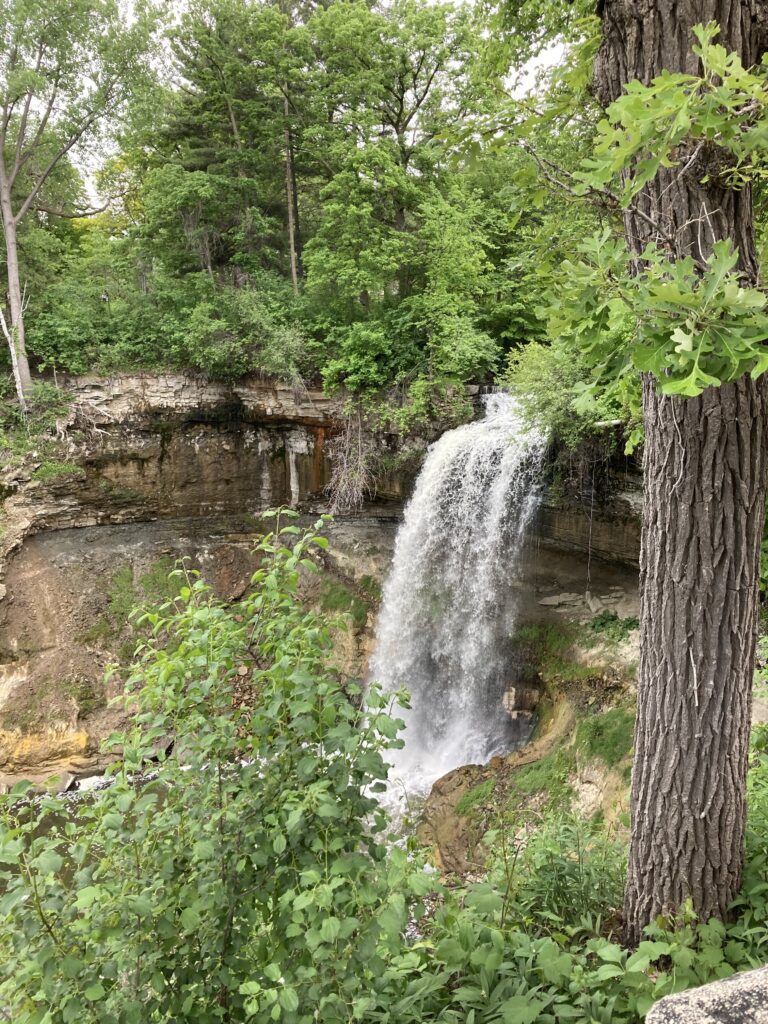North Dakota is not flat! We North Dakotans get a little peevish about that. We like to say North Dakota is an undulating landscape of rolling hills, rills, buttes, ridges, bluffs, coulees, and (out west) badlands. North Dakota’s Red River Valley is flat, very flat, because it is an ancient glacial lakebed. But the rest of the state? Undulation.
OK, we get it. North Dakota is not Colorado. It is not Montana. It is not even South Dakota.
North Dakota is the 19th largest state, but geographers say it has only one waterfall. It’s a waterfall without a name, over in Ransom County, near the Minnesota border.
For twenty years I have wanted to go see it. How can you claim to be a lover of North Dakota if you don’t go in search of the sublime? But for all those twenty years, I have found other things I wanted to do more with my North Dakota exploration time.

My friend Sara grew up partly in Ransom County, so we decided to make a day trip of it recently and seek out the waterfall, which she claimed to have seen as a child. Well, maybe. Neither one of us was quite sure just where it was. We let Google GPS software take us there. It’s about a two-and-one-half hour drive from Bismarck. Even then, we made a false start that cost us an hour.
Finally, we found the trailhead with a sign indicating that the great falls were a three mile hike.
The excitement was almost too much for me.
I’ve seen Niagara Falls a couple of times. I’ve seen upper and lower Yellowstone Falls. I’ve seen the falls in Yosemite. I’ve hiked to Morell Falls near Seely Lake, Montana. I’ve been to the Falls of the Ohio. I’ve gazed at Spearfish Falls in the Black Hills of South Dakota. And I’ve been to the Great Falls at Great Falls, Montana.
We took our time getting to the Unnamed Unheralded Falls of North Dakota. It was the first real hike of the year after a punishing Dakota winter. Even Sara, a rancher and horse lover, was feeling a little winter-sluggish. And then, finally, we rounded a corner and there it was!
As I stood before it in full “God Bless America” mode, teary like Chevy Chase at Wally World, I’m afraid I was unable to channel my inner Meriwether Lewis and call it a “sublimely grand object,” second only to Niagara and arguably better. It was a little — how do you say? — understated. Let’s see if I can describe it with the precision Jefferson used when he visited the Natural Bridge in western Virginia:
The Falls are approximately four feet wide at their widest and about three feet in height. To the untrained eye, much of it looks like a trickle. Just left of center, the Falls pour a little water over the precipice, if I may use that term, the way a garden hose delivers water with the spigot more closed than open. The cliff of the Falls is not quite upright. Thus, the water doesn’t do a lot of flying through the air. It dribbles down the face of the Falls a little half-heartedly. I’ve heard the word “oozes” used derisively by Falls detractors, but I reject that. After it reaches the bottom of the Falls, the water pools a little, though you would be hard-pressed to get very wet if you sat there for a while. If you had not been prepared to see the Falls and just happened upon them, you might be excused for confusing them with a little spring run-off, a bit of erosion at the edge of a plowed field. Several adventurers have attempted to shoot the Falls in tubes and canoes with reckless abandon, but so far, all have been hung up at the top because their body weight exceeds the lifting power of the water. The early attempts to harness the hydropower of the Falls were apparently unsuccessful.
We sat at the base of the Falls for some time, trying to feel the sublimity. One advantage of North Dakota’s greatest waterfall is that you can have a conversation at the base without your words being drowned out by the thunderous flow of the water.
Sara felt that moral responsibility one feels after a big buildup and an underwhelming result. You take someone somewhere they are going to love absolutely, and then they don’t. You make your friend watch a movie they are going to absolutely love, and they don’t. Sara said the Falls are more impressive in big water years because you can recognize them as a waterfall. She said she was only eight when she was last there, and childhood memory is unreliable. She said the water above might have been diverted into a cattle pond. She said a lot of things.
We did not see another human being during the three hours we spent at or near the Great Falls of North Dakota. Nobody on the trails. Nobody at the trailhead. No film crews. No base camps.
I’m a lover of North Dakota. Therefore, I would like to suggest that we stop calling the world’s attention to these Falls, remove the signage, burn the benches along the hiking trail, file lawsuits to remove websites calling attention to the Falls, and declare ourselves instead America’s “Falls Free State.”
Minnehaha Falls and Henry Wadsworth Longfellow

But now, three weeks later, I found myself in Minneapolis, Minnesota, where I went to university long ago and where, around 1960, I lived for a year with my family. I wanted to do a little comparative waterfall reconnaissance, so I drove over to the parking lot for Minnehaha Falls. Note: there was a parking lot.
I strolled over to the falls overlook and there it was. Modest by Niagara standards, it would be considered Victoria Falls if it were in North Dakota. It has a 53-foot drop. It’s beautiful. It makes some noise. It attracts 850,000 pilgrims annually, compared to circa 172 in North Dakota. The name Minnehaha inspired the poet Henry Wadsworth Longfellow to name his tragic Native maiden Minnehaha in The Song of Hiawatha (1855). You know the poem:
By the shores of Gitche Gumee,
By the shining Big-Sea-Water,
Stood the wigwam of Nokomis,
Daughter of the Moon, Nokomis.
Dark behind it rose the forest,
Rose the black and gloomy pine-trees,
Rose the firs with cones upon them;
Bright before it beat the water.
It is true that Longfellow never visited Minnehaha Falls. Had he visited the Great Falls of North Dakota, who knows what epic he might have written there?
By the farmland in Dakota,
Soybeans, corn, and golden milo,
Oozed the Falls of Ransom County
Trickle yes and almost treacle,
Water hidden from the public
Through the eons unimpressive
Slipping down the tender topsoil
Subtle goal of simple people,
Water pure but also bitter
Spend your time in other zip codes
You can shove your Gitche Gumee.
Something like that.

What made Minnehaha Falls extraordinary was not the 53 feet of actual water cascading over the face of the creek, but the people who gathered there on a warm Monday evening. There were approximately 2,000 people in the park. That would make it the twenty-fifth largest town in North Dakota. By North Dakota standards it looked like a Minnesota meeting of the United Nations: people of all colors, all clothing styles, all ethnicities, all languages, and all religions. Muslims, Christians, Jews, Lakota. It had the feel of a street fair. The old and the young. Families with prams. Families having picnics in the park. Lovers loving. Adolescents holding hands. Hundreds of people posing for selfies. You could get a score of different ethnic foods at the kiosks and the food trucks.
Minnesota is right next to North Dakota, just across the Red River of the North, and yet Minnesota is a place of great diversity. North Dakota not so much. If that same sample of humanity were airlifted into the heart of North Dakota, it would immediately be the most multicultural gathering in the history of the state. It would raise some eyebrows. It would precipitate some alarm. And yet here at Minnehaha Falls I saw a new realization of the American Dream.
A great midwestern city with a great university of national importance on America’s primary river, the Mississippi. In fact, the Mississippi River at the head of its navigation. I visited St. Anthony Falls, too, but it was so industrialized as to be no longer very enchanting.
Nobody reads Longfellow anymore. It’s worth spending some time with Evangeline or The Song of Hiawatha just to enjoy the poetic rhythms Longfellow was attempting to use in English, which is best suited to iambic pentameter rather than his trochaic tetrameter. His incantations are often enchanting. He was one of several writers attempting to create the Epic of America, to declare our cultural independence from Great Britain.
North Dakota is … North Dakota. I love it. But I would not try to oversell it. It’s not for the faint of heart. And it is not clear to me that I will ever return to the Great Falls of Ransom County. Or recommend them either. The good news is that they have not, like Niagara, been commercialized by souvenir shops and kitsch.
Roll on, Columbia, Roll on.
